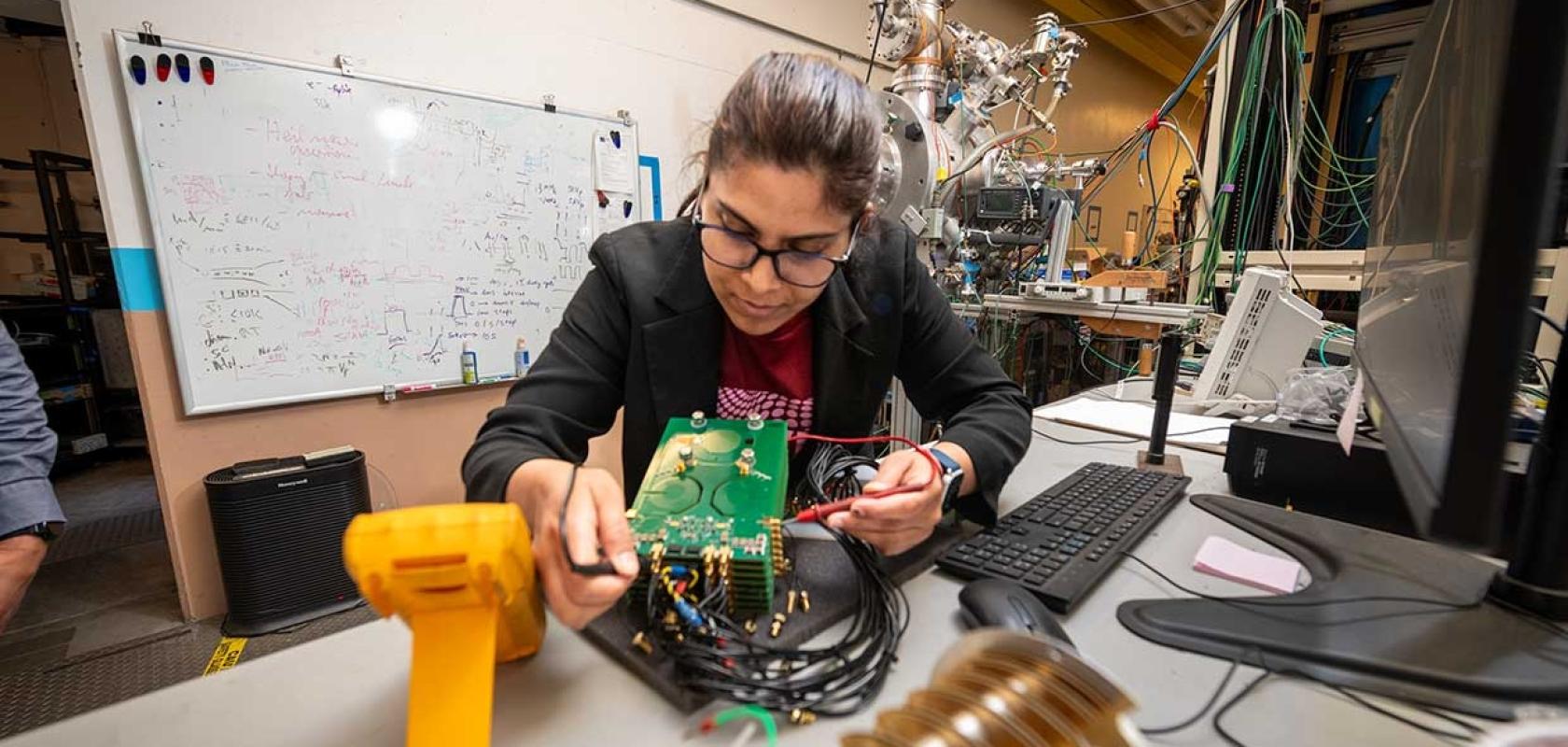Getting qubits to connect – a keystone of quantum computing – may soon be possible, thanks to a femtosecond laser used to create and 'annihilate' qubits on demand, and with precision, by doping silicon with hydrogen.
The advance, led by Lawrence Berkeley National Laboratory (Berkeley Lab), could enable quantum computers that use programmable optical qubits, or 'spin-photon qubits', to connect quantum nodes across a remote network. It could also advance a quantum internet that is not only more secure but could also transmit more data than current optical-fibre information technologies.
The challenge of connecting qubits
Enabling quantum computing relies on being able to string together billions of qubits – or quantum bits – with atomic precision.
Connecting qubits, however, has been challenging for the research community. Some methods form qubits by placing an entire silicon wafer in a rapid annealing oven at very high temperatures. With these methods, qubits randomly form from defects (also known as colour centres or quantum emitters) in silicon’s crystal lattice. And without knowing exactly where qubits are located in a material, a quantum computer of connected qubits will be difficult to realise.
“To make a scalable quantum architecture or network, we need qubits that can reliably form on-demand, at desired locations, so that we know where the qubit is located in a material. And that’s why our approach is critical,” said Kaushalya Jhuria, a postdoctoral scholar at Berkeley Lab and first author of a study recently published in Nature Communications. “Because once we know where a specific qubit is sitting, we can determine how to connect this qubit with other components in the system and make a quantum network.”
Forming qubits in silicon with programmable control
The new method uses a gas environment to form programmable defects called ‘colour centres’ in silicon. These colour centres are candidates for special telecommunications qubits or ‘spin photon qubits.’ The method uses an ultrafast femtosecond laser to anneal silicon with pinpoint precision where those qubits should precisely form.
Spin photon qubits emit photons that can carry information encoded in electron spin across long distances – ideal properties to support a secure quantum network. Qubits are the smallest components of a quantum information system that encodes data in three different states: 1, 0, or a superposition that is everything between 1 and 0.
The team used a near-infrared detector to characterise the resulting colour centres by probing their optical (photoluminescence) signals.
What they uncovered surprised them: a quantum emitter called the Ci centre. Owing to its simple structure, stability at room temperature, and promising spin properties, the Ci centre is an interesting spin photon qubit candidate that emits photons in the telecom band. “We knew from the literature that Ci can be formed in silicon, but we didn’t expect to actually make this new spin photon qubit candidate with our approach,” Jhuria said.
Femtosecond laser creates qubits without damaging silicon
The researchers learned that processing silicon with a low femtosecond laser intensity in the presence of hydrogen helped to create the Ci colour centres. Further experiments showed that increasing the laser intensity can increase the mobility of hydrogen, which passivates undesirable colour centres without damaging the silicon lattice.
Further theoretical analysis shows that the brightness of the Ci colour centre is boosted by several orders of magnitude in the presence of hydrogen, confirming their observations from laboratory experiments.
“The femtosecond laser pulses can kick out hydrogen atoms or bring them back, allowing the programmable formation of desired optical qubits in precise locations,” Jhuria said.
The team plans to use the technique to integrate optical qubits in quantum devices such as reflective cavities and waveguides, and to discover new spin photon qubit candidates with properties optimised for selected applications.
“Now that we can reliably make colour centres, we want to get different qubits to talk to each other – which is an embodiment of quantum entanglement – and see which ones perform the best. This is just the beginning,” said Jhuria.


